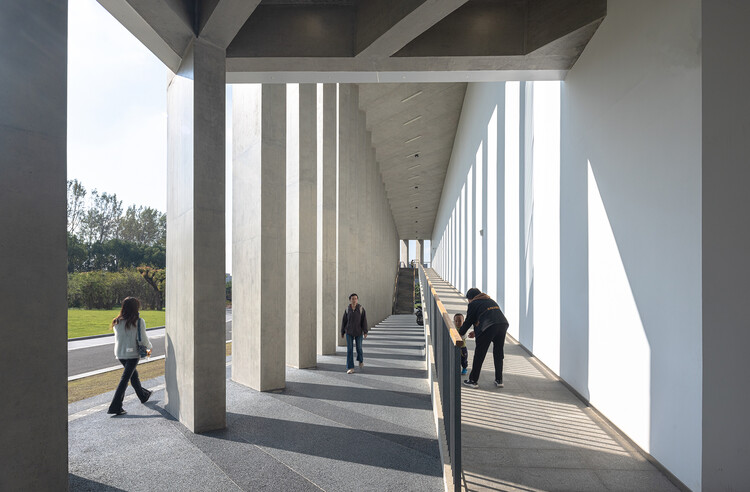

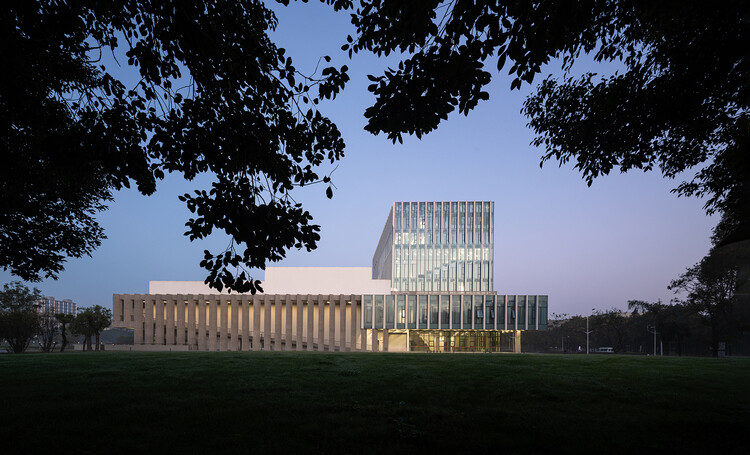
Text description provided by the architects. Tongji University Jiading Campus was established in 2002. The campus still lacks an attractive public cultural core. Yijia Building (Students’ Activity Center) has been endowed with a heterogeneous and catalytic role, hoping to provide a spatial experience different from teaching and colleges, and become a powerful anchor point to activate the cultural vitality of the campus.


Yijia Building is located at the southeast end of the campus, adjacent to the teaching area and the dormitory area, and faces the lakeside lawn to the southwest. The building adopts a combination of 2 and 9 floors, becoming a landmark on the east side of the south entrance axis and echoing the library on the west side. The design is based on the concept of “roaming the vertical campus”, connecting the underground to the rooftop garden through three-dimensional Spaces such as ramps, stairs and corridors, forming a continuous spatial sequence like a Chinese garden, with changing scenes as one moves.
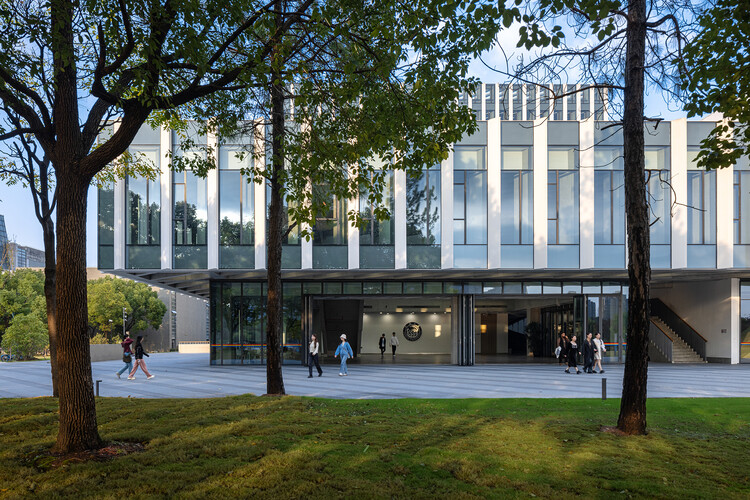
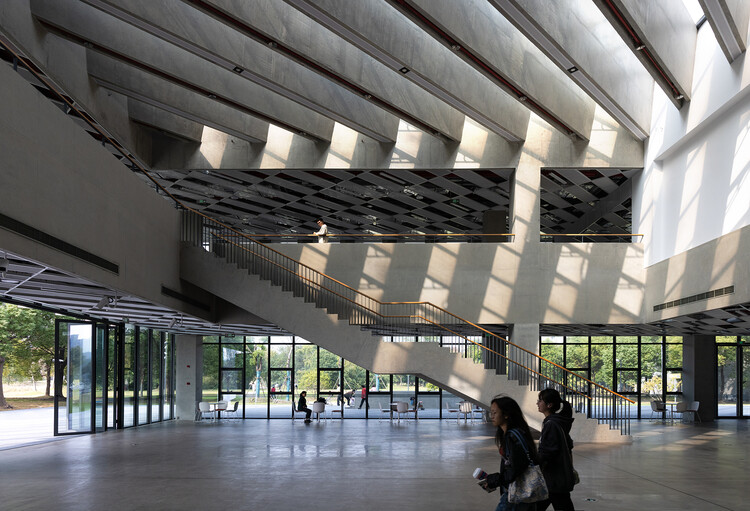
The architectural walkway simultaneously connects a rich variety of functional Spaces, providing a “borderless composite functional space” where teachers and students can sit, lie down, chat, observe, read, think, feel and act. The exterior of the building adopts a stone-like volume controlled by system modules, which is simple and powerful, forming a differentiated strategy from the rich interior space. The building foundation adopts an overall “floating seismic system”, with a 2-meter-high isolation layer set between the foundation and the underground first floor.


The upper components are designed to be reduced by one degree according to the seismic fortification intensity. Strengthen the “integrated design” of buildings and structures. Nearly 40.5% of the structural components of buildings adopt the concrete prefabricated assembly system. The concrete prefabricated ribbed beam and column system is integrated and presented with lighting fixtures, sprinkles, daylighting, air diversion, etc. The design introduces thermodynamic technology and establishes an overall analysis model of fluid dynamics.

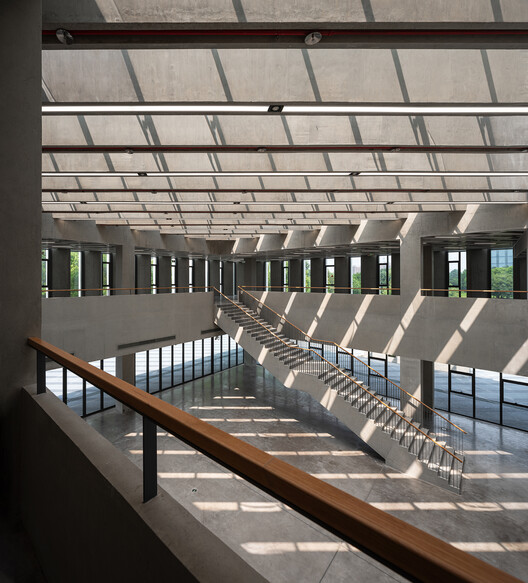
The main building adopts a combination of atrium and thermodynamic chimney to guide the dominant air to run vertically through the building and achieve maximum natural ventilation during the transitional season. The public atrium of the podium can achieve large-scale facade opening and closing and top ventilation during the transitional season. The overall carbon emissions throughout the entire life cycle of the building were reduced by 7%, which is equivalent to planting 250,000 trees in the Jiading Campus.
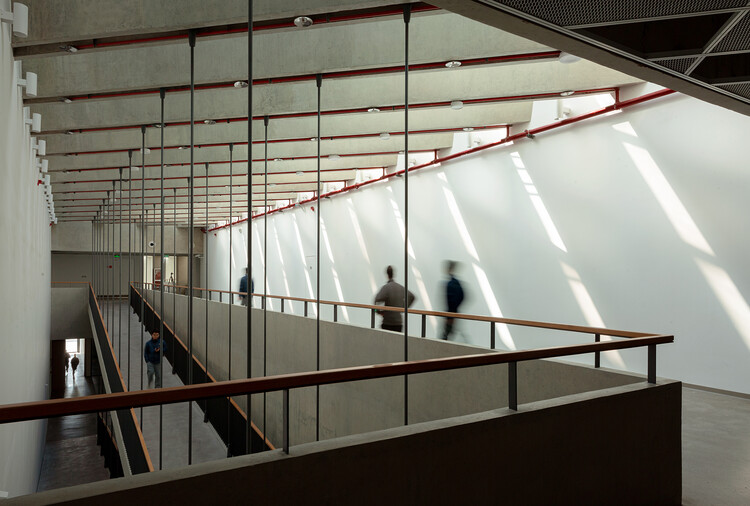


Yijia Building’s systematic integration of architecture, structure, thermodynamics and other aspects provides a model of “ecological prefabricated construction” that integrates space, construction and performance. The design has created a rich spatial texture and natural experience both inside and outside the building. As you walk through it, light and shadow play, the wind passes through the space, and the scenery of trees and lakes rushes towards you. The building has become a vibrant “spatial container of light and wind”.
